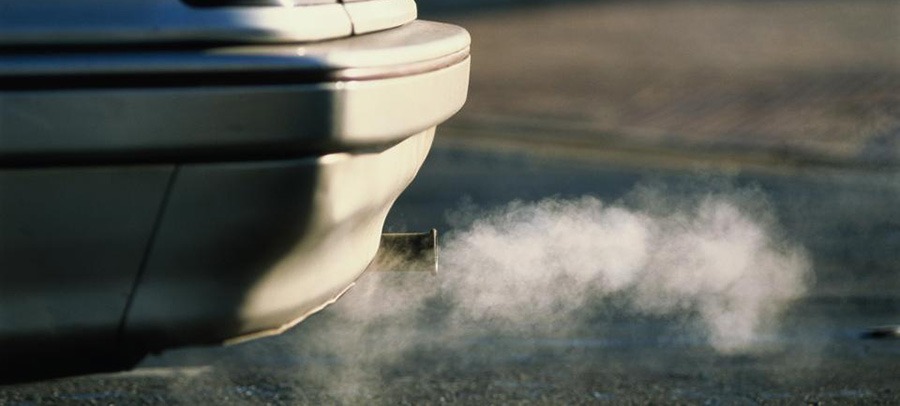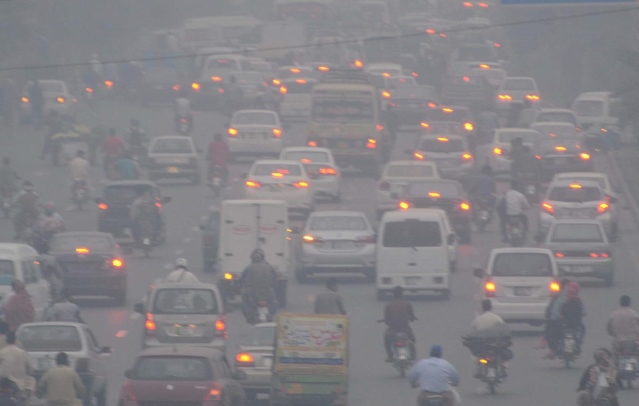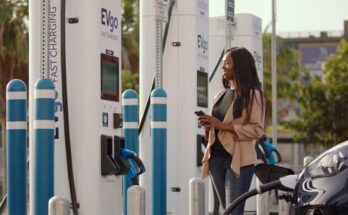Emission standards are the legal requirements governing air pollutants released into the atmosphere. Emission standards set quantitative limits on the permissible amount of specific air pollutants that may be released from specific sources over specific timeframes. They are generally designed to achieve better air quality standards and to protect human life.
There are largely three main sets of emission standards: United States, Japanese, and European, with various markets mostly using these as their base. Some countries such as Sweden, Switzerland, and Australia had separate emissions standards for many years but have since adopted the European standards. Since last few years China, India and other newer markets have also begun enforcing their own vehicle emissions standards.
Related: India to Enforce BS-VI Emission Standards by 2020
An emission performance standard is basically a limit that sets thresholds above which a different type of vehicle emissions control technology might be needed. These standards have been used to dictate limits for conventional pollutants such as oxides of nitrogen and oxides of sulphur (NOx and SOx), Hydrocarbons (HC), Particulate Matter (PM) as well as to regulate greenhouse gasses, particularly carbon dioxide (CO2).
These standards are set differently depending on the fuel & usage of the vehicle. For example, standards for petrol and diesel vehicles are defined differently. Similarly the standards vary for passenger vehicles, commercial vehicles and large buses etc. However in each case these standards are update after a certain periodic interval and automakers have to abide to produce vehicles that meet these regulations. Those vehicles if unable to meet these requirements are simply not allowed to go on sale in markets where these standards are enforced.
Since we follow the European emission standards in our country, let us have a look at the history of various EU emission standards that have been implemented over the course of last couple of decades.
Euro 1
- Approved: 1st July 1992
- Implementation date: 31st December 1992
The first Europe-wide euro emissions standards were introduced in July 1992. The fitment of catalytic converters became compulsory on all new cars, and Euro 1 required the switch to the usage of unleaded petrol. Back then, only hydrocarbons and nitrogen oxide were tested, along with particulate matter in the case of diesel engines. Over the years, the regulations have become stricter and the limits are lowered.
Euro I emissions standards (petrol)
- CO: 2.72g/km
- HC + NOx: 0.97g/km
Euro I emissions standards (diesel)
- CO: 2.72g/km
- HC + NOx: 0.97g/km
- PM: 0.14g/km
Euro 2
- Approved: 1st January 1996
- Implementation date: 1st January 1997
Euro II reduced the limits for carbon monoxide and the combined limit for unburned hydrocarbons and nitrogen oxide, as well as introducing different levels for petrol and diesel engines.
Euro II emissions standards (petrol)
- CO: 2.2g/km
- HC + NOx: 0.5g/km
Euro II emissions standards (diesel)
- CO: 1.0g/km
- HC + NOx: 0.7g/km
- PM: 0.08g/km
Euro 3
- Approved: 1st January 2000
- Implementation date: 1st January 2001
Euro III split the hydrocarbons and nitrogen oxide limits for petrol and diesel engines, as well as adding a separate nitrogen oxide limit for diesel vehicles. In addition, the warm-up period was removed from the test procedure.
Euro III emissions standards (petrol)
- CO: 2.3g/km
- THC: 0.20g/km
- NOx: 0.15g/km
Euro III emissions standards (diesel)
- CO: 0.66g/km
- HC + NOx: 0.56g/km
- NOx: 0.50g/km
- PM: 0.05g/km
Euro 4
- Approved: 1st January 2005
- Implementation date: 1st January 2006
The Euro IV standards saw the particulate & emission regulations becoming more stringent than before.
Euro IV emissions standards (petrol)
- CO: 1.0g/km
- THC: 0.10g/km
- NOx: 0.08g/km
Euro IV emissions standards (diesel)
- CO: 0.50g/km
- HC + NOx: 0.30g/km
- NOx: 0.25g/km
- PM: 0.025g/km
Euro 5
- Approved: 1 September 2009
- Implementation date: 1st January 2011
The key aspect for Euro V was the introduction of particulate filters (DPFs) for diesel vehicles, along with lower limits across the board. DPFs capture 99% of all particulate matter and are fitted to every new diesel car. Cars meeting Euro V standards emit the equivalent of one grain of sand per kilometer driven.
Euro V emissions standards (petrol)
- CO: 1.0g/km
- THC: 0.10g/km
- NMHC: 0.068g/km
- NOx: 0.06g/km
- PM: 0.005g/km (direct injection only)
Euro V emissions standards (diesel)
- CO: 0.50g/km
- HC + NOx: 0.23g/km
- NOx: 0.18g/km
- PM: 0.005g/km
- PN [#/km]: 6.0×10 ^11/km
Euro 6
- Approved: 1st September 2014
- Implementation date: 1st September 2015
The 6th and current incarnation of the Euro emissions standard was introduced on most new registrations in September 2015. For diesels, the permitted level of NOx was slashed from 0.18g/km in Euro 5 to 0.08g/km. A focus on diesel NOx was the direct result of studies connecting these emissions with respiratory problems.
To meet the new targets, some carmakers introduced Selective Catalytic Reduction (SCR), in which a liquid-reductant agent is injected through a catalyst into the exhaust of a diesel vehicle. A chemical reaction converts the nitrogen oxide into harmless water and nitrogen, which are expelled through the exhaust pipe.
Related: Honda to Stop Producing Gasoline Vehicles in Europe by 2022
The alternative method of meeting Euro 6 standards is Exhaust Gas Recirculation (EGR). A portion of the exhaust gas is mixed with intake air to lower the burning temperature. The vehicle’s ECU controls the EGR in accordance with the engine load or speed.
Euro VI emissions standards (petrol)
- CO: 1.0g/km
- THC: 0.10g/km
- NMHC: 0.068g/km
- NOx: 0.06g/km
- PM: 0.005g/km (direct injection only)
- PN [#/km]: 6.0×10 ^11/km (direct injection only)
Euro VI emissions standards (diesel)
- CO: 0.50g/km
- HC + NOx: 0.17g/km
- NOx: 0.08g/km
- PM: 0.005g/km
- PN [#/km]: 6.0×10 ^11/km
The air pollutant emissions from transport are a significant contribution to the overall state of air quality, with industry and power generation being the other major sources. While these standards have ensured a reduction in vehicle emissions, the so-called ‘dieselgate’ scandal highlighted that there is still work to be done, not least because carmakers felt the need to ‘cheat’ to meet the stringent standards.
Related: China Bans 533 Cars that Fails to Comply Fuel Consumption Standards
In 2017, the EU introduced a ‘Real Driving Emissions’ (RDE) test. It is hoped that this will better reflect actual emissions on the road, reducing the discrepancy between real-world emissions and those measured in a laboratory.
Euro 7– when will it be introduced?
It is widely believed that the EU is planning to introduce a new Euro VII emissions standard in the coming years. However, in April 2019 the European Parliament and Council adopted new regulations setting CO2 emission performance standards for new passenger cars and vans which will start applying from 1st January 2020. It remains to be seen when the EU will officially implement a Euro 7 emissions standard with the same requirements as previous standards alongside this new regulation.
Pakistan Still Enforces Euro 2
Pakistan officially adapted the Euro 2 emission standards in 2012. It is quite easy to understand we are couple of decades behind the motoring world in terms of production, quality, safety as well as emissions. Euro 2 became obsolete almost 2 decades ago, while we are yet to embrace a newer standard even in 2020. Pakistan also announced its first EV policy draft in November last year; however the policy has become a football due to a tussle between the two ministries. While most of the markets around the world have already adapted to Euro 5 & Euro 6, and EU already working on to introduce Euro 7, we are still 20 years behind with Euro 2 standards implemented in our country.

A computer animation professional with over 23 years of industry experience having served in leading organizations, TV channels & production facilities in Pakistan. An avid car enthusiast and petrolhead with an affection to deliver quality content to help shape opinions. Formerly written for PakWheels as well as major publications including Dawn. Founder of CarSpiritPK.com






